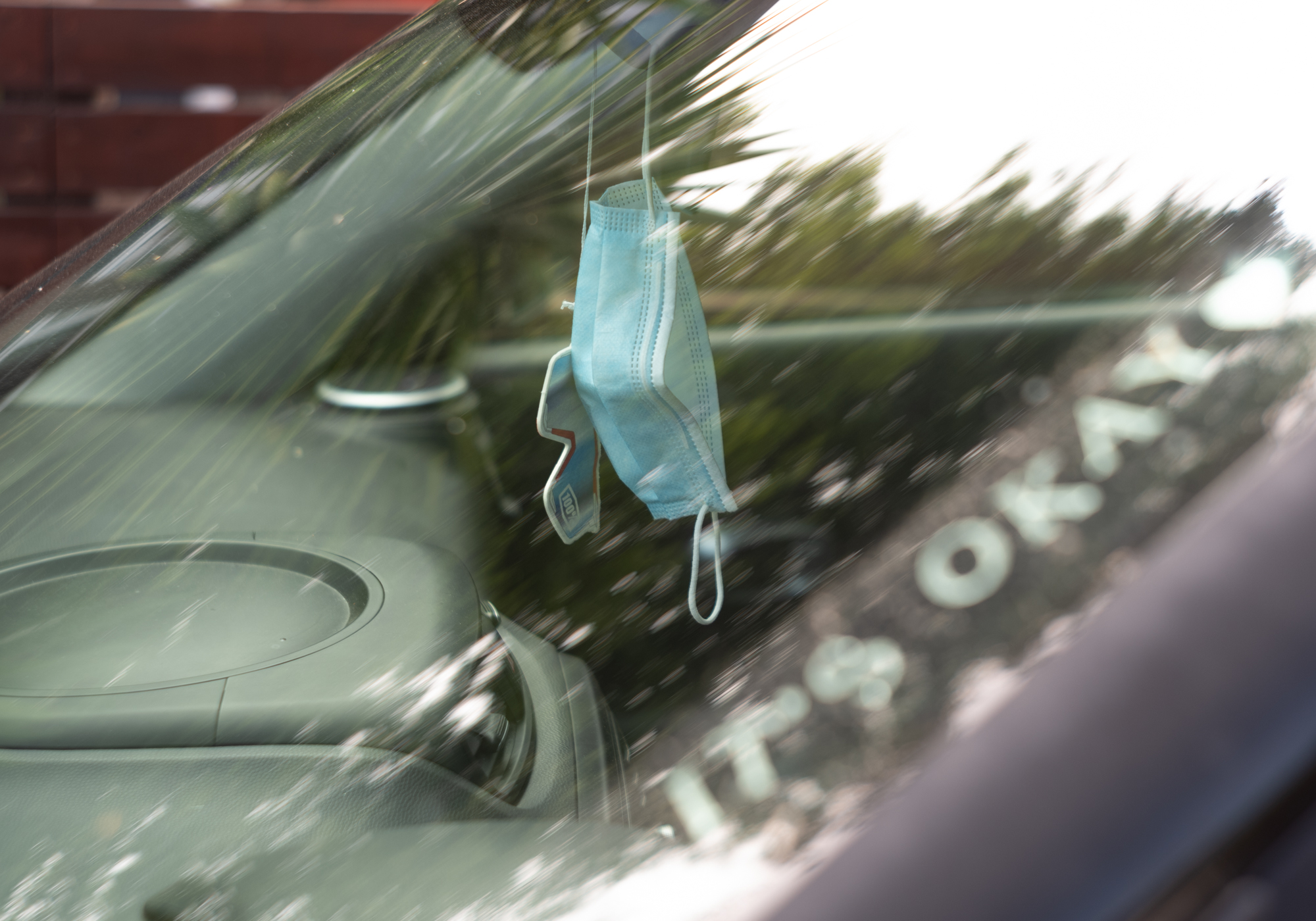The Jupiter-8 50mm F2 lens is a Russian copy of the prewar Carl Zeiss Contax Sonnar 50mm f/2 lens. It was manufactured from the 1950s until the fall of the Soviet Union in 1991. There are four versions:
- Type 1:1950’s. Silver body with an infinity focus lock. The aperture ring moves independent of the focusing block.
- Type 2: 1960’s. Silver body with no infinity focus lock. The aperture ring moves independent of the focusing block.
- Type 3: 1970’s. Black body with white numbers. The aperture ring moves in tandem with the focusing block.
- Type 4: 1980’s-1991. Black body with green and white numbers. The antiflare coating is better than previous versions. The aperture ring moves in tandem with the focusing block.
Roman, from Retro Photo House, recommends either a Type 1 or a Type 4. Type 1 has better sharpness across the image and at wider apertures while the Type 4 is more flare resistant. Type 2 is his third favorite with a Type 3 as his least favorite. For this review, I used an excellent condition Type 4 copy.
On garden gnomes and parked cars.
If you are following my search for the ultimate set of lenses for my digital rangefinder, you know my opinion is that most vintage lenses have at least some usability issues. Some are worse than others. The issues with the Type 4 version of the Jupiter-8 fall into the worse category.
There is a long focus throw. This is a headache but not a deal-breaker.
The main issue with this lens is that the aperture ring moves in tandem with the focusing ring. Practically speaking, that means that you cannot change the aperture without (firmly) holding the focusing ring with your other hand. Changing the aperture is a two-handed operation that requires you to take the camera down from your eye, change the aperture using two hands, put the camera back to your eye, and then refocus. In my workflow, this is a deal-breaker.
When I am shooting with a rangefinder, I have a little hack (some would accurately call it a crutch) that I use to help guarantee focus. As an example, if I really want to shoot an image at F2, I will shoot that image and then immediately stop down the aperture a few clicks and take another shot without adjusting focus. The second image might not be the exact image I want but the larger depth of field with the larger aperture will help guarantee that I have at least one image in focus. It takes less than a second to pull off the entire maneuver. This hack is not possible with the Type 4 version of this lens because the aperture ring is bound to the focusing ring. This is not an issue with the Type 1 version because the focusing ring moves independent of the aperture ring.
With most lenses, I don’t get too worked up about lens design. This is primarily because I am not a lens designer or optical physicist so everything I say, even if I manage to sound intelligent while saying it, will be regurgitated nonsense from other non-lens designers and other non-optical physicists I read on the internet. Normally, I spare you that pain but when it comes to lenses based on a Sonnar design, we need to take a very shallow dive into lens design.
No discussion of a Sonnar lens would be complete without at least mentioning the Sonnar “focus shift.” There are excellent discussions of this issue on Luminous Landscape and 35mmc(1). Briefly, the Sonnar focus shift refers to two distinct issues.
- Sonnar lenses are calibrated to focus at a particular F-stop and are expected to slightly front or back focus at other f-stops. For example, a Sonnar lens calibrated at f2.8 is expected to be slightly out of focus at F1.5 orF2. We will come back to this later.
- Sonnar lenses are not expected to stay in focus if you change the aperture without refocusing. It is reasonable to believe that this might be an issue with the Jupiter-8 but there is no real way for me to test this because the focusing ring on my Type 4 lens moves in tandem with the aperture ring. When I move the aperture the focusing ring also moves so it is impossible to test
These “issues” are known issues that lens designers accepted when designing the Sonnar. The tradeoff for these issues is the traits that Sonnar design brings to the image rendering table. Specifically, Sonnar lenses are known for their creamy bokeh and rendering that is especially good for portraits. Apparently, focus shifts, lens design, and portraits are as bound to one another in the Sonnar lens design as the aperture and focusing rings are bound to one another on my Jupiter-8.
Does it have SOUL?
Is it possible that your impression of the soul of an image is dependent on your state of mind?
The reason I ask is that the day I got this lens I sent the following text to a big muckety muck photographer and fellow Leica user:

And then I used the lens again. And again. And then I used it some more and my excitement for the lens waned. I went ahead and used it some more and found that I could not regain my initial fervor.
My analysis of the situation is that my lizard brain got the best of me. Because this lens only cost $70.00 (and I got an expensive copy) I was duped to thinking “holy crow. This lens is amazing!!!!!” primarily because it was so inexpensive.
If a lens is a pretty good performer but you got it for a bargain does that make it an excellent performer or a worthwhile purchase? No! Of course not. That is stupid math. Finances are a zero-sum game. You could have just as easily taken that money and put it toward a different lens (a good choice), buy CBD treats for your dog, buy a White Stripes album, or even buy a new pair of toenail clippers.
After using it for some time, I found my monkey brain (lots of animals up in my brain apparently) chattering away me saying “Ok guy. This lens is unusable at F2 and you know it. Stop trying to justify what is going on here because it is so inexpensive. It is passable at 2.8, good at F4, and darn remarkable at f8 but aren’t all lenses, even kit lenses, good at f8? What are you doing fiddling with that ill-conceived aperture ring trying to convince yourself that it has more soul than it really does? This is the vintage equivalent of a kit lens and you know it. Stop trying to justify what is going on here because it is so cheap. What are you doing playing with toys? You are a grown man. You should have brought something else but now you are too far from home to swap it out. Dummy.”
Is your goal to make memorable photographs or to buy an inexpensive lens and then post images on Instagram so you can hashtag #jupiter-8 #russianlens #vintage #bargain #lookatme and then have the Russophile maniacs respond back with a fist emoji, muscle arm emoji, hot hot hot emoji, followed by a Russian flag emoji to let you know that they know that you are in the club?

Which brings me to the final question I kept asking myself, “if this lens cost $250 would anyone buy it?” I am not sure that they would.
For the record, I wasn’t sure if the softness I was seeing at open apertures was a calibration error or due to the Sonnar shift so I mounted the lens on a Panasonic S1 and did some tests. It is just soft wide open. There was no calibration issues. Moreover, the softness wasn’t charming or glowy or soulful. It was just out of focus.
So, did I keep it?
If you own a rangefinder, you need a 50mm lens, and your goal in life is to spend as little as possible on absolutely everything, this lens is a keeper. That is not my situation. Frankly, I don’t even think that hypothetical rangefinder owner even exists in 2020. If you are shooting film, you have the disposable income to spend on film so you can probably afford more than a kit lens. If you are shooting a digital Leica, you have disposable income. I guess it is possible that you stole your digital Leica and now you need a super inexpensive lens, but this website is not for Leica thieves. I choose to ignore you.
It is hard to justify taking the time to sell a lens that is this inexpensive so it will remain on my shelf. The question you should be asking is whether I will take it off the shelf and use it in the future. To learn more about which lenses I kept and which lenses I sold, learn from my experience, and to support this site, please check out my Leica Lenses for Normal People:The Recommended Lists.
Sample Images
The following shows the difference between wide open and stopped down.










